
- Published on
Homemade Pappardelle: A Guide to Rustic Gourmet Pasta at Home
- Authors

- Name
- About Us - HealthyFood2Go
Introduction
Pasta lovers often crave the satisfaction of creating their own fresh, homemade pappardelle. This rustic yet elegant pasta form, known for its wide ribbons, serves as the perfect foundation for a range of sauces, zests, and grated cheese. It's a culinary adventure that transforms everyday cooking into an artisan experience.
- Understanding Your Ingredients: The Foundation of Flavor
- The Dough: Heart of Your Pasta
- The Art of Hand-Making Pappardelle
- Variations: Your Personal Pasta Twist
- Pairing Your Pasta: The Finishing Touch
- Storing and Serving: Savoring Now and Later
- Tips and Tricks for the Perfect Pappardelle
- Step-by-Step Guide to Making Homemade Pappardelle Pasta
- 1. Ingredient Assembly:
- 2. Preparing the Dough:
- 3. Kneading the Dough:
- 4. Resting the Dough:
- 5. Rolling the Dough:
- 6. Cutting the Pappardelle:
- 7. Drying the Pasta (Optional):
- 8. Cooking the Pappardelle:
- 9. Serving Suggestions:
- Conclusion: The Joy of Homemade Pasta
Understanding Your Ingredients: The Foundation of Flavor

Understanding Your Ingredients: The Foundation of Flavor
The journey to perfect homemade pappardelle begins with understanding your ingredients. The ratio of eggs to flour is crucial in achieving the ideal texture. While “00” flour is preferred for its low gluten content, providing a silky smooth dough, alternatives like all-purpose, rye, or chickpea flour offer exciting variations. Each flour type brings its unique flair, enhancing the pasta with diverse flavors and textures.
The Dough: Heart of Your Pasta

The Dough: Heart of Your Pasta
Mixing the dough is where the magic starts. On your countertop, create a mound of your chosen flour with a deep crater in the middle. Crack the eggs into this, adding a pinch of salt and a drizzle of olive oil. With a fork or spatula, gently incorporate the flour into the eggs, forming a cohesive and silky dough. Kneading is key; it's a process where your love and effort go into every fold.
The Art of Hand-Making Pappardelle

The Art of Hand-Making Pappardelle
Not everyone has a pasta machine, and honestly, you don’t need one. Hand-rolling your dough on a floured surface adds a touch of authenticity to your pasta session. Use a rolling pin to achieve the desired thickness, then cut the pasta strips with a sharp knife or bench scraper. This method not only connects you to traditional Italian pasta-making but also allows for personalization in the pasta's width and shape.
Variations: Your Personal Pasta Twist
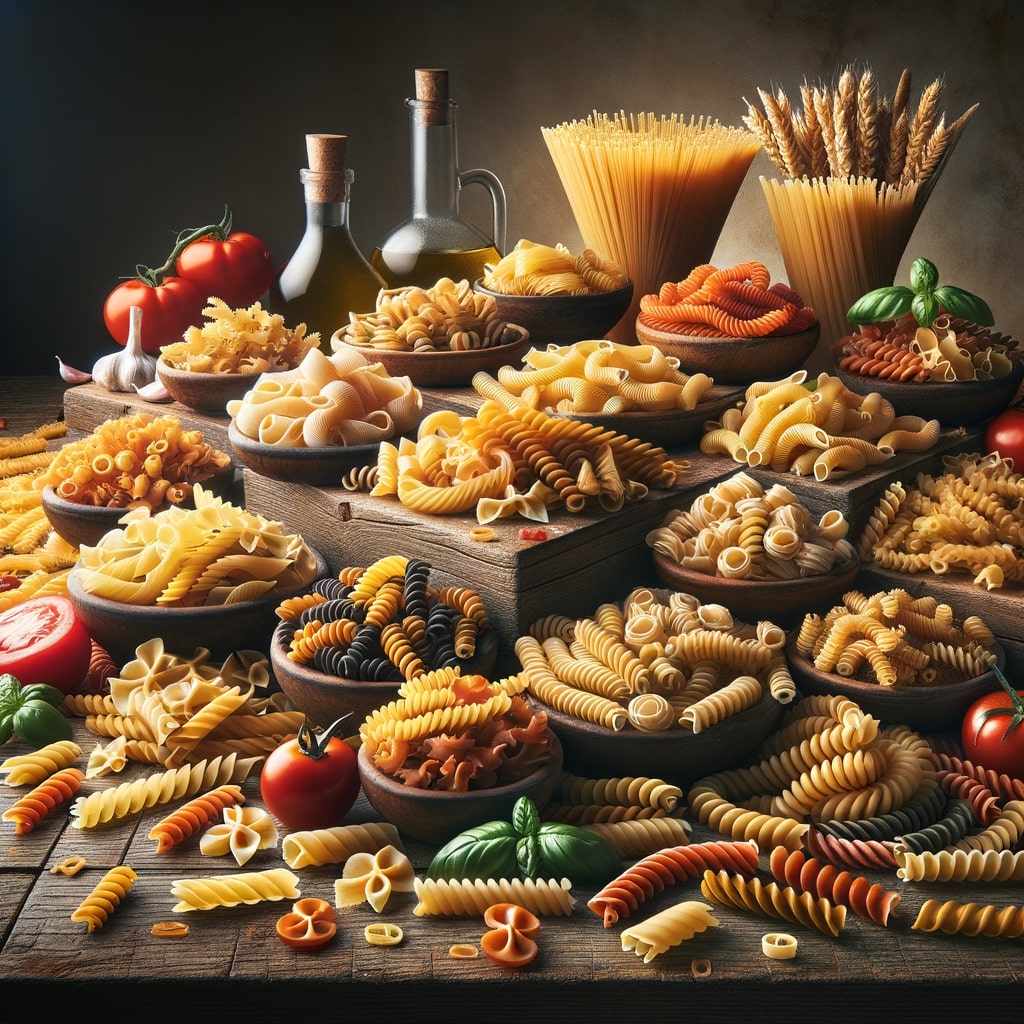
Variations: Your Personal Pasta Twist
Homemade pappardelle is a canvas for creativity. Experiment with higher egg-y dough for richer taste or blend different flours for a unique homemade pasta recipe. Winter pappardelle might include a mix of whole-grain and “00” flour, while in summer, lighter variants like chickpea flour can be refreshing. Adjusting water content is essential when experimenting with hybrid flours, ensuring the dough remains pliable.
Pairing Your Pasta: The Finishing Touch
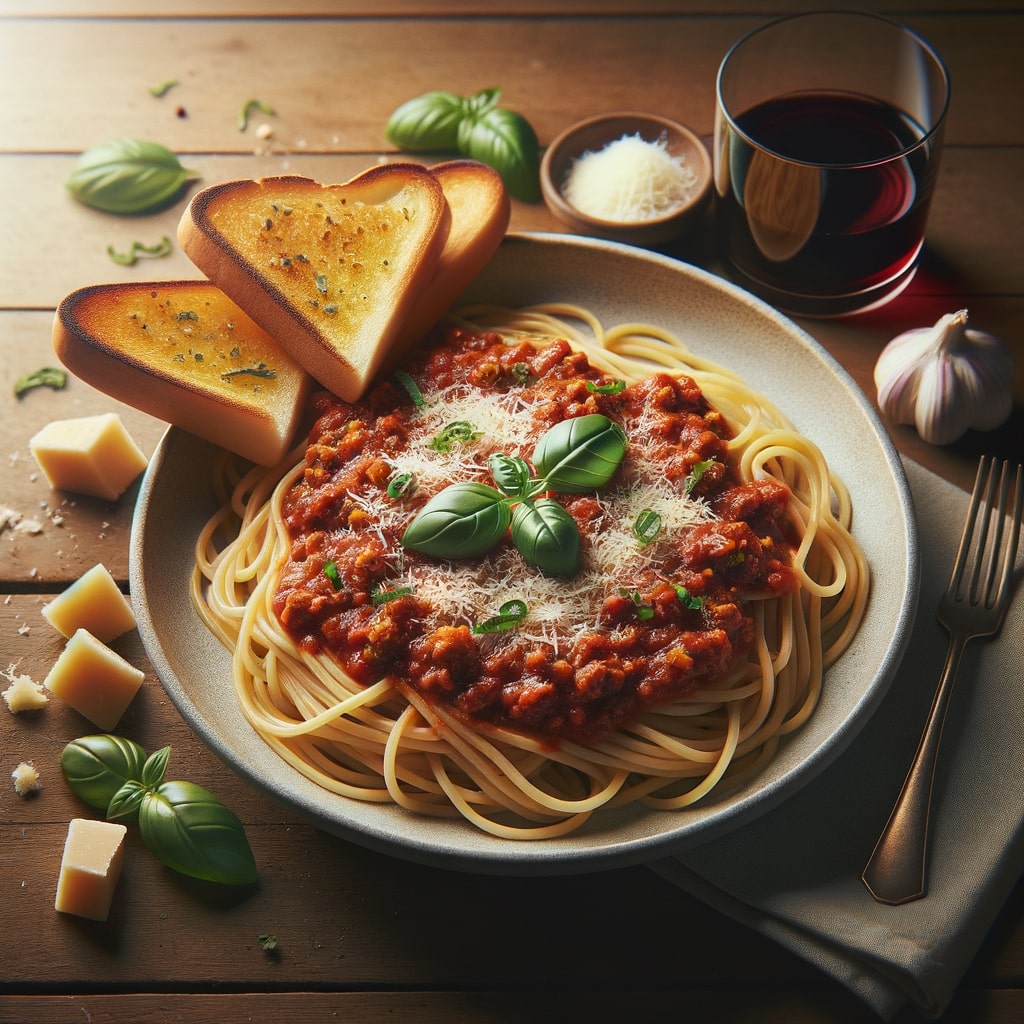
Pairing Your Pasta: The Finishing Touch
What elevates homemade pappardelle is its pairing with the right sauce and toppings. Its wide ribbons are perfect for thicker, hearty sauces but also work wonderfully with simple zests and cheese. Whether it’s a traditional Bolognese or a modern, veggie-packed sauce, pappardelle provides a robust base that holds flavors beautifully.
Storing and Serving: Savoring Now and Later
Fresh pappardelle can be cooked immediately or stored for later delight. For short-term use, let the cut pasta strips dry at room temperature and prevent drying out. For longer storage, freezing your pasta in nests is a great option, preserving its freshness and texture. When it comes to
cooking, remember that fresh pappardelle swells up more than its dried counterpart, adjusting cooking times accordingly.
Tips and Tricks for the Perfect Pappardelle
- Rolling the Dough: Aim for even thickness to ensure uniform cooking. If the dough springs back, let it rest for a few minutes.
- Preventing Stickiness: Generously flour both the dough and the cutting surface. This is vital to keep your pasta from turning into a sticky mass.
- Cutting Techniques: For consistent width, use a ruler as a guide when cutting. This ensures that your pappardelle cooks evenly.
- Cooking to Perfection: Fresh pasta cooks faster than dried. It's done when it floats to the surface, usually in about 2-4 minutes.
- Sauce Pairing: Given its broad surface, pappardelle is excellent with robust sauces. Consider rich meaty sauces or creamy, butter-based ones for a delightful meal.
Step-by-Step Guide to Making Homemade Pappardelle Pasta
1. Ingredient Assembly:
Begin by gathering your ingredients. You'll need “00” flour (or your choice of alternative flours like all-purpose or chickpea), fresh eggs, olive oil, and a pinch of salt. Ensure that all ingredients are at room temperature for better integration.
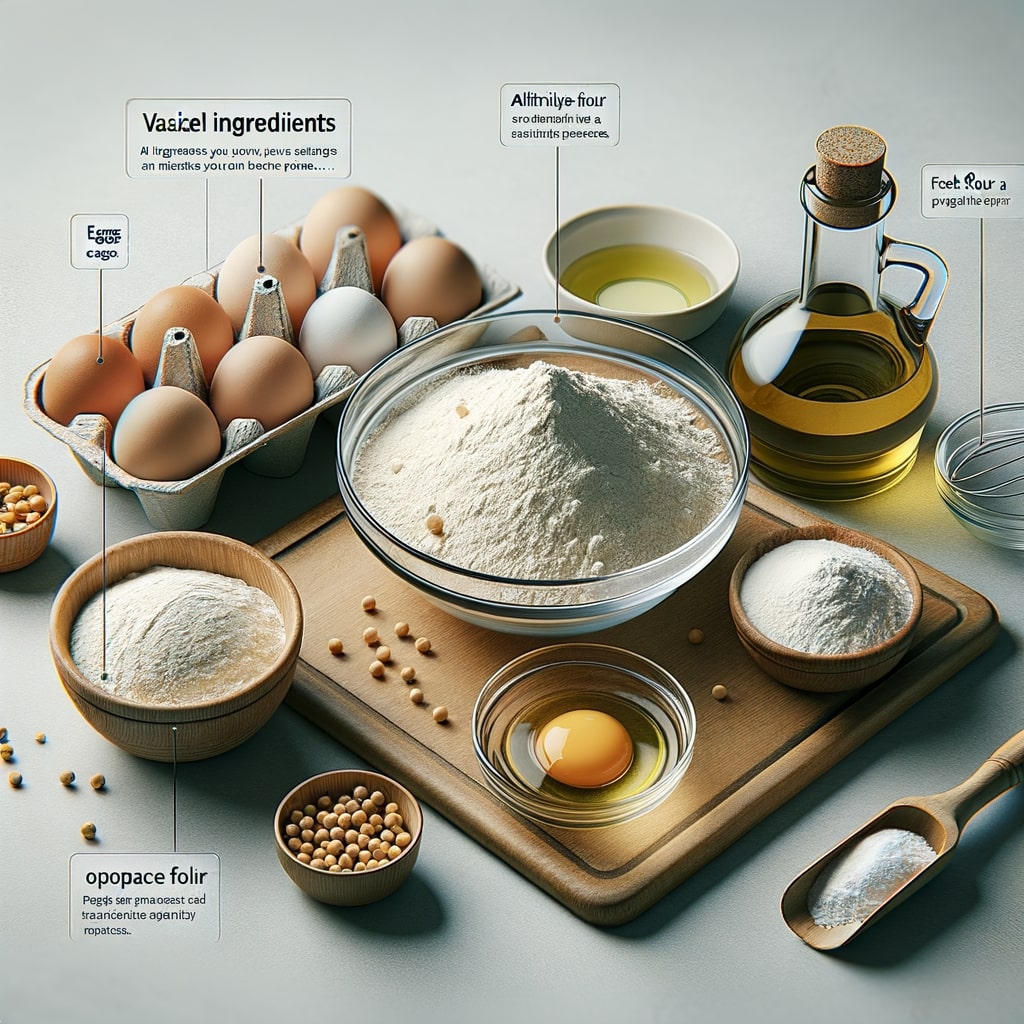
2. Preparing the Dough:
On a clean, flat surface, pour your flour and create a well in the center. Crack the eggs into this well. Add a drizzle of olive oil and a pinch of salt around the rim of the flour. Using a fork, gently start to whisk the eggs, gradually pulling in flour from the sides of the well. The goal is to slowly incorporate the flour into the eggs to form a sticky dough.
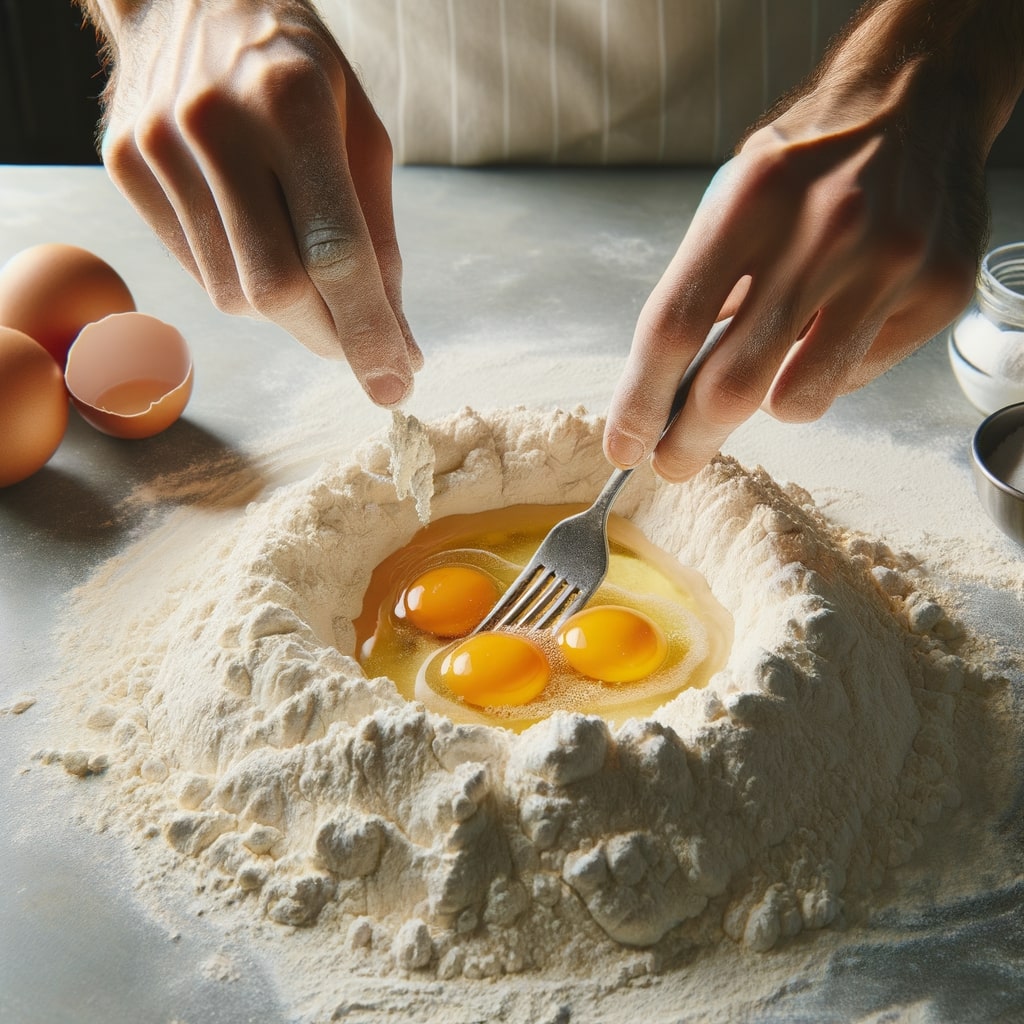
3. Kneading the Dough:
Once the dough starts to come together, use your hands to knead it. Press and fold the dough, working it until it becomes smooth and elastic. This process might take about 10 minutes. If the dough feels too sticky, add a bit more flour; if it's too dry, a few drops of water. A well-kneaded dough should be smooth and not stick to your fingers.
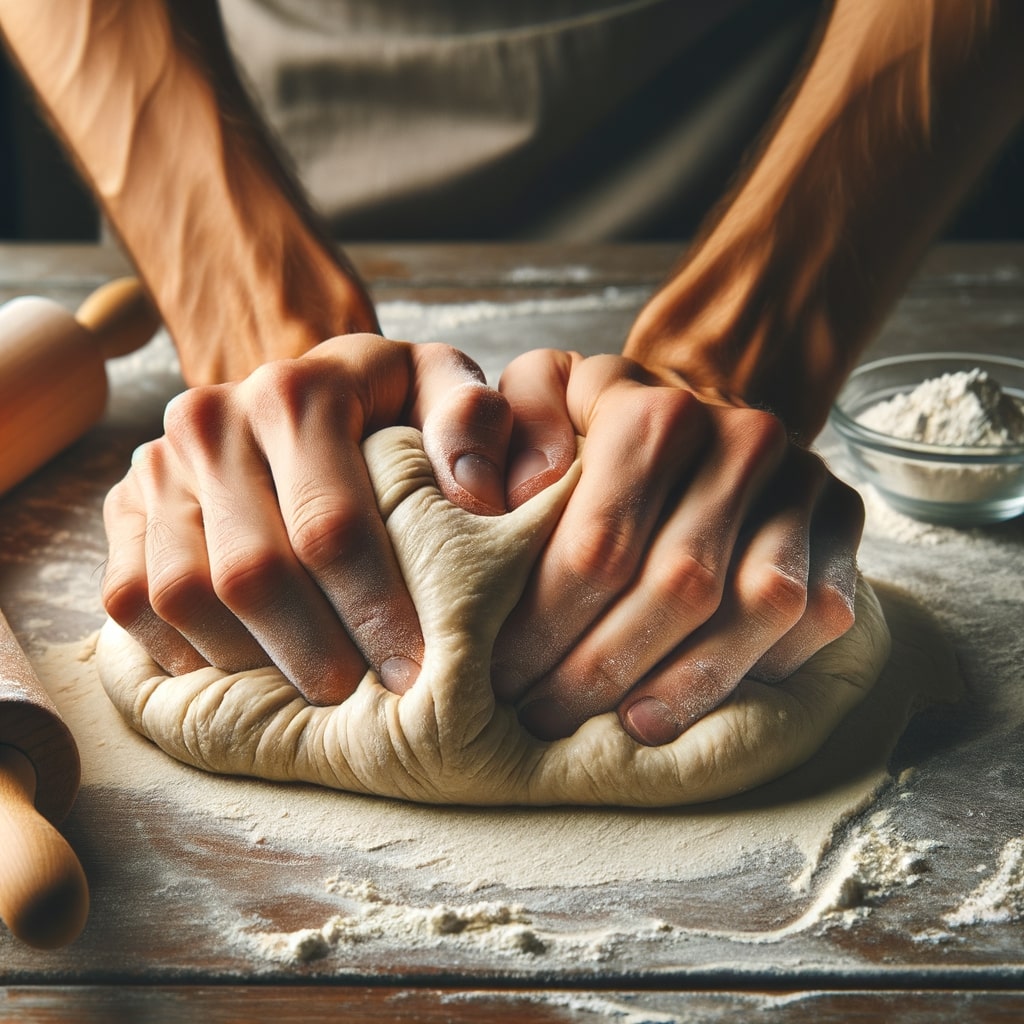
4. Resting the Dough:
Shape the dough into a ball and cover it with a clean kitchen towel. Let it rest for about 30 minutes at room temperature. This resting period allows the gluten in the dough to relax, making it easier to roll out.
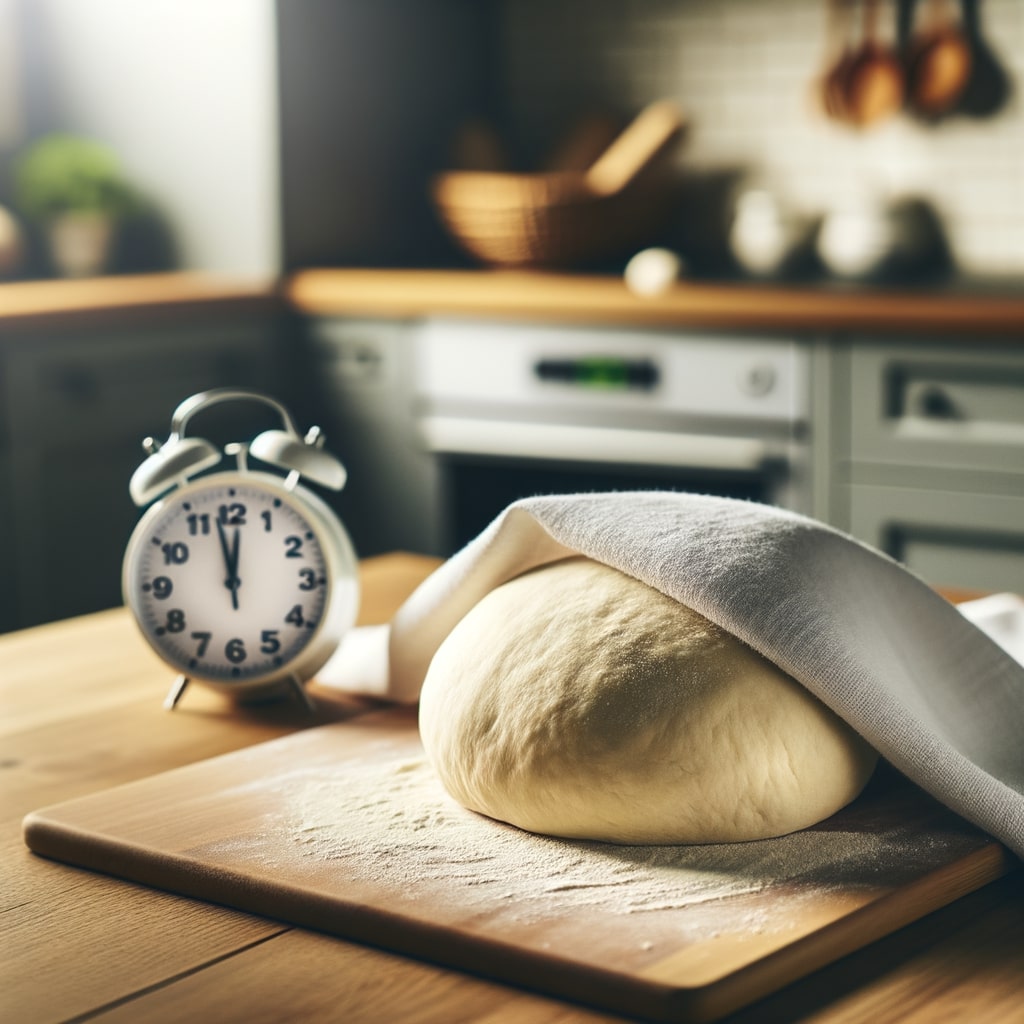
5. Rolling the Dough:
Once rested, divide the dough into smaller portions for easier handling. Using a rolling pin, roll out one portion of the dough on a floured surface. Aim for a thickness of about 1/16 inch (around 1.5 mm). Ensure uniform thickness for even cooking. If you find the dough springing back, let it rest for a few more minutes.
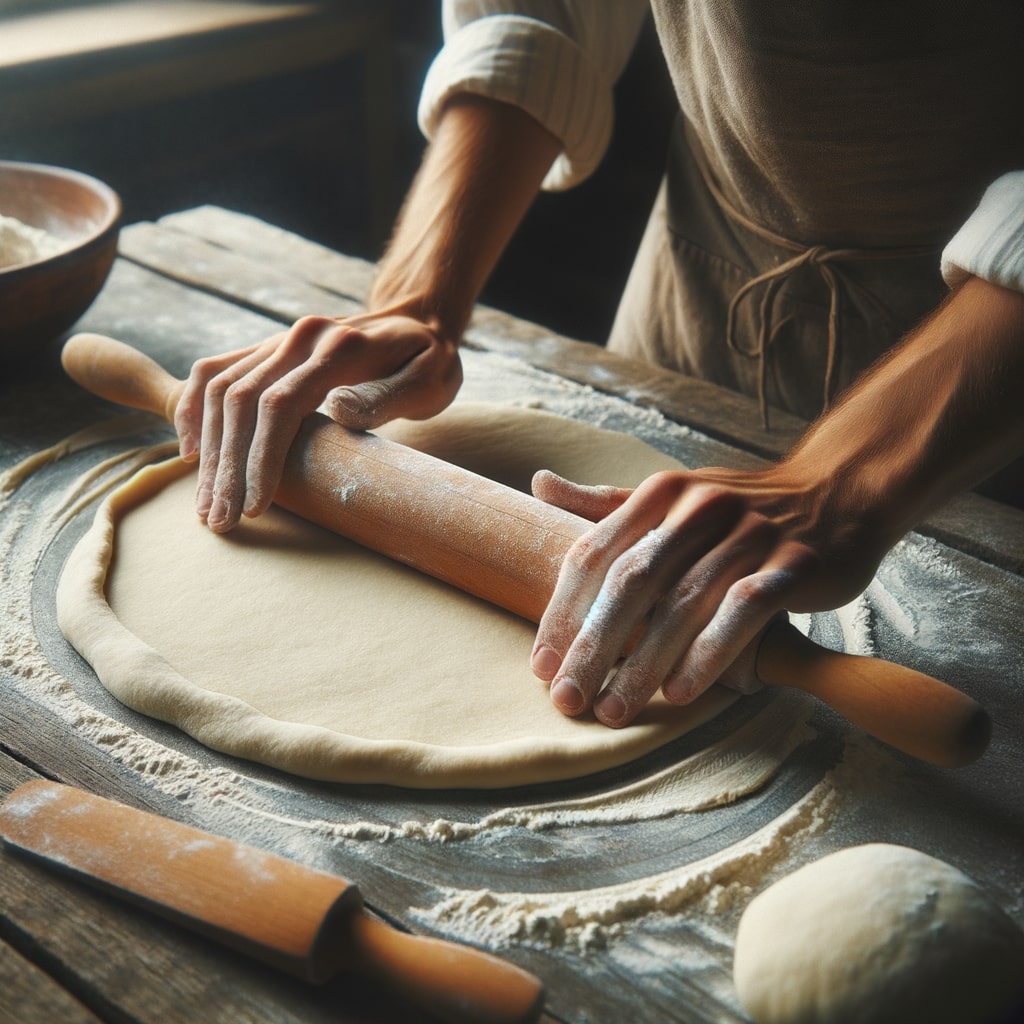
6. Cutting the Pappardelle:
With a sharp knife or a pasta cutter, slice the rolled-out dough into wide ribbons, approximately 1 inch (2.5 cm) wide. If the strips stick together, dust them lightly with flour. You can also gently fold the dough into a flat roll and slice it, then unfurl the ribbons.
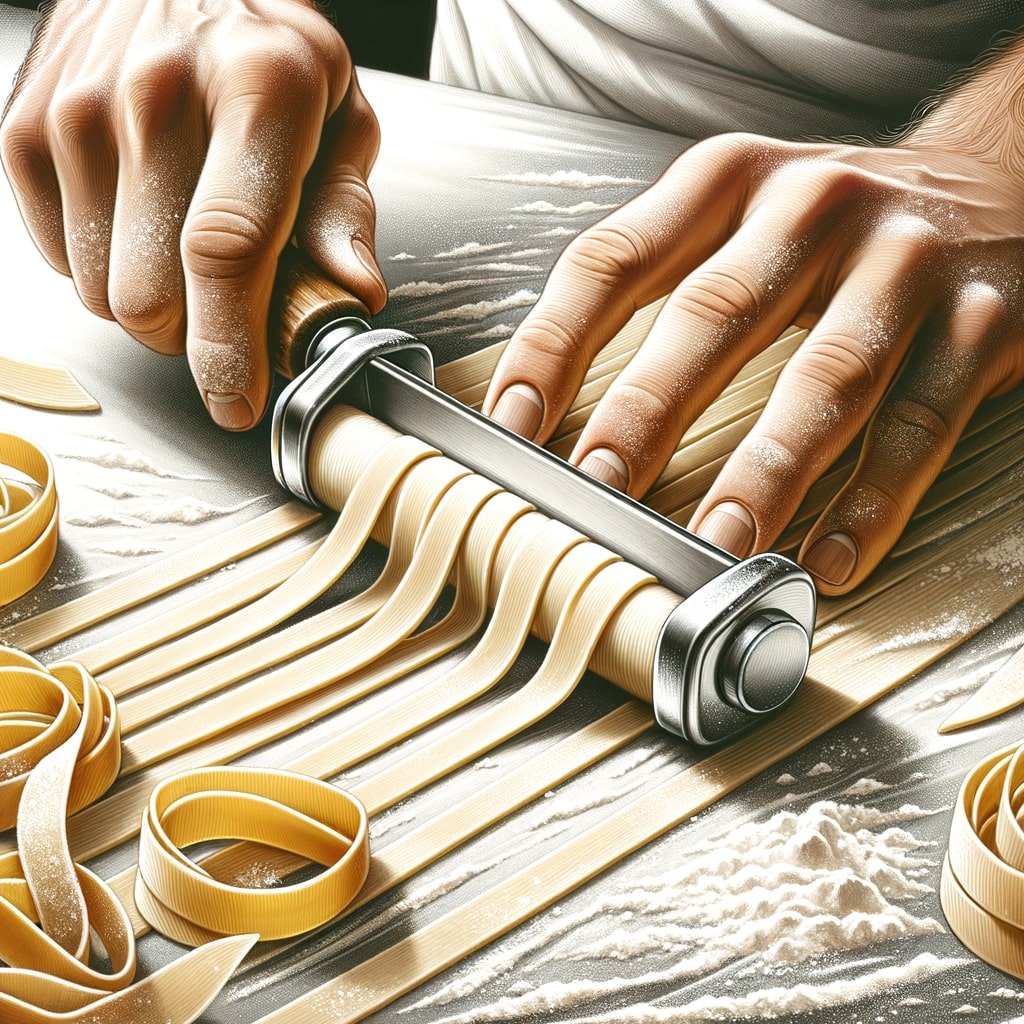
7. Drying the Pasta (Optional):
If not cooking immediately, you can lay the cut pasta on a drying rack or a floured baking sheet, allowing it to dry for a bit. This helps in preventing sticking and makes the pasta slightly firmer for cooking later.
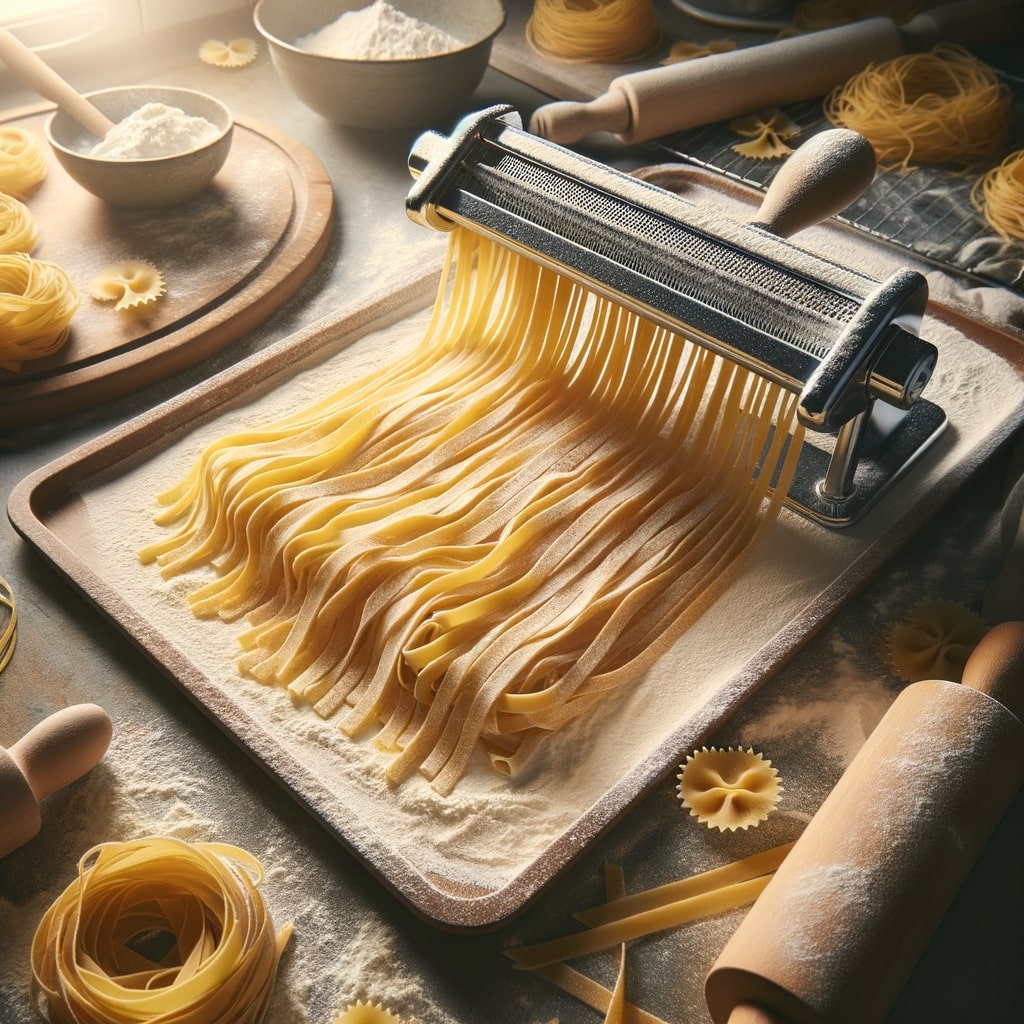
8. Cooking the Pappardelle:
To cook, bring a large pot of salted water to a boil. Add the pappardelle and stir gently to separate the strands. Cook for 2-4 minutes until al dente – the pasta should float to the surface when done. Drain the pasta and toss it with your chosen sauce.

9. Serving Suggestions:
Serve the pappardelle with your preferred sauce. For a heartier meal, pair it with a robust meat sauce or keep it light with a simple olive oil and herb dressing. Top with freshly grated cheese and enjoy!
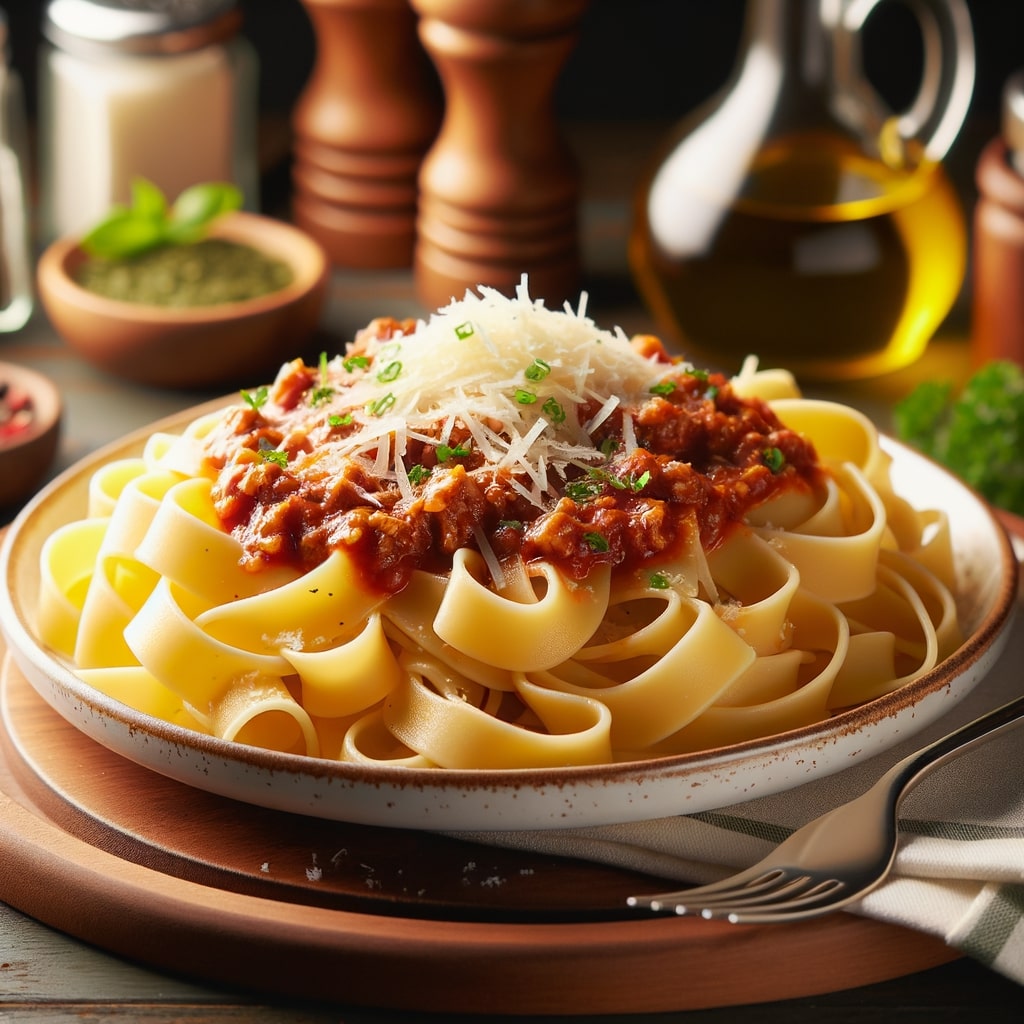
Conclusion: The Joy of Homemade Pasta
Making pappardelle at home is more than just a cooking activity; it's an art that brings joy and satisfaction. It encourages exploration in the kitchen, letting you personalize each step of the process. From choosing your flour blend to rolling and cutting by hand, each element adds to the uniqueness of your dish. So, grab your rolling pin, and let's create pasta that's not just food, but an experience!
